Chapter 20. Chapter 20: Introduction to Animal Physiology
Review & Rehearse
Review & Rehearse
true
true
You must read each slide, and complete any questions on the slide, in sequence.
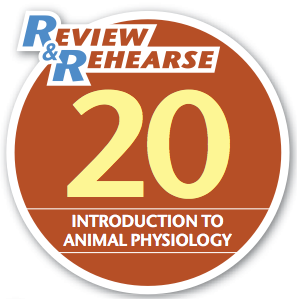
Instructions
Review the visual summaries and answer the essay questions below.
Make sure to enter a brief response that completely answers each question and explains your reasoning. When you click "Submit," you will be provided instant feedback, allowing you to check if your response is correct.
(This activity contains 12 total essay questions. Each new question will be revealed once you complete the preceding question.)
Question 20.1


A chief benefit of multicellularity is that it makes possible a division of labor and specialization at the cellular level.
Question 20.2
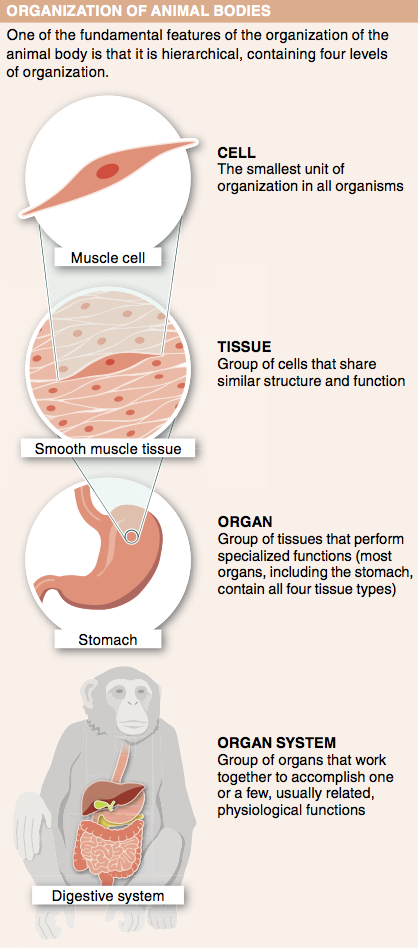
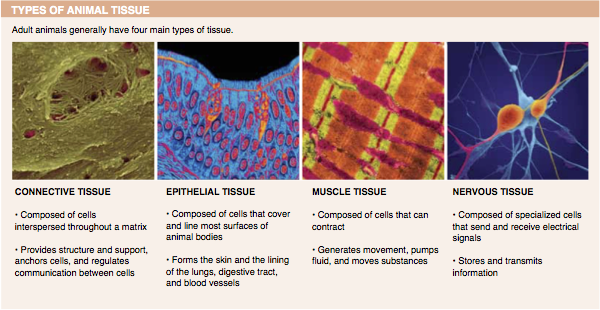
Connective tissue is like a “cellular glue” because it holds cells together in a matrix and gives shape, support, and structure to other tissues and organs throughout the body.
Question 20.3
8p3z8utvw8kuumdV1wErmBkZCcrV4Dzg8kgVP9tmU/zeoDElBHcULpUT48qEMD4ql4T37BBAvqBtnogbMfpqiNR4VtpLqDv34PnR3+pcAbg=Epithelial tissue can form exocrine glands, which, depending on the type, produce and secrete saliva, sweat, or mucus.
Question 20.4
jKrYx2ruQmxzwISFiqXCjKub6jxESYhw17EJoBF882Uw7+xiUpeeNNzat+oR4jrIMOFQiPXdAXGXgknC2sJkNG2DDD182n/0qbWkSko5NyhQcOc/h7GJ+/skfi/mHUhPhD5z1mDkFOc=(a) Skeletal muscles attach to bones and generate movement; most are under conscious control (some, such as those that control breathing, are not). (b) Cardiac muscle is located only in the heart and is not under conscious control. (c) Smooth muscle is found in the bladder and stomach and in many other organs. It generates slow rhythmic contractions and is not under conscious control. All three types of muscle are similar in that they consist of cells that can contract.
Question 20.5
XNdls+lBe7bAzA6rDGvn+q2paxk1VLULx8OX4DS2xeNTskFf9DMH1ezfxaDDp9TvfQ6jHIJoyBRC+1PwwJm46cT5Ang=Glial cells support, nourish, and protect nerve cells (neurons). Damage to the glial cells could cause overall dysfunction of the nervous system, including impairment of signal propagation, of nervous system development, and of the repair of nervous system injury.
Question 20.6

The circulatory system regulates the pumping of blood around the body.
Question 20.7

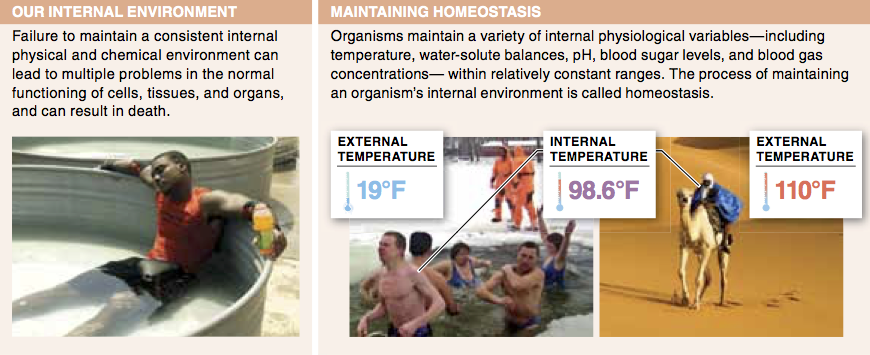
Hyperthermia is a dangerously elevated body temperature. It is caused by a failure of the body to maintain homeostasis—a consistent internal environment, including a consistent body temperature, that is necessary for the normal functioning of cells, tissues, and organ systems.
Question 20.8
+LJ+CD8o9AHRqnzjiHVk49m20u9lEM69Ix14JOJ55jcFHltrkIih+5j54weAqe3A6BVItkgRier607eVF2gTjxPzEML5JJcEWA3PMwdum6HzgbTTWDTXOx3H8Brgh3fisjc24XZDNjzFl0J9c4bG6TBggMGLtp9i4V4pnnI+HfjqZ5l8USvpW5DJrQqA4ylArLQBEiNniR3UcS5l+W1tZo703u0LtTVa2ruJ3hO/j2zeJATyIn large multicellular organisms, the vast majority of cells are not in direct contact with the external environment, and thus the internal environment takes on greater importance than the external environment in influencing cell functioning. Internal variables such as pH, blood gas concentrations, and temperature are kept within a relatively constant range.
Question 20.9

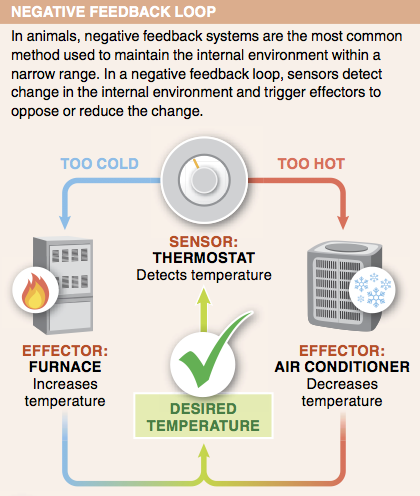
Negative feedback systems are more common in organisms because they oppose or reduce change in the internal environment. Positive feedback systems, in contrast, oppose homeostasis in response to a change, pushing the body away from normal conditions.
Question 20.10
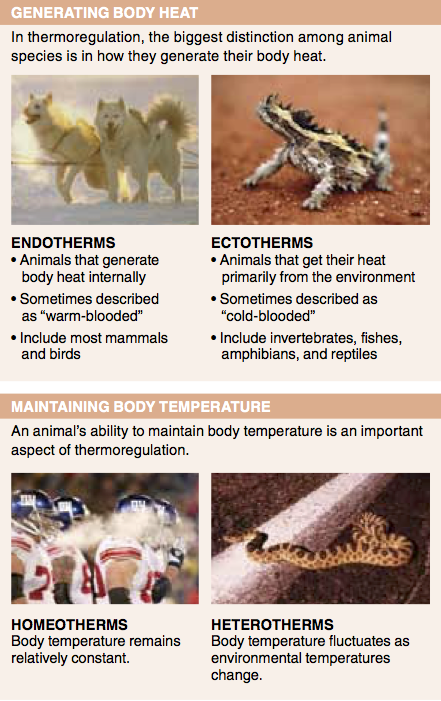
(a) Evaporation is the loss of heat that occurs as a liquid turns to gas (the evaporation of sweat is an example). (b) Radiation is the transfer of heat, without direct contact, from a warmer object to a colder object (the heat from a fireplace is an example).
Question 20.11
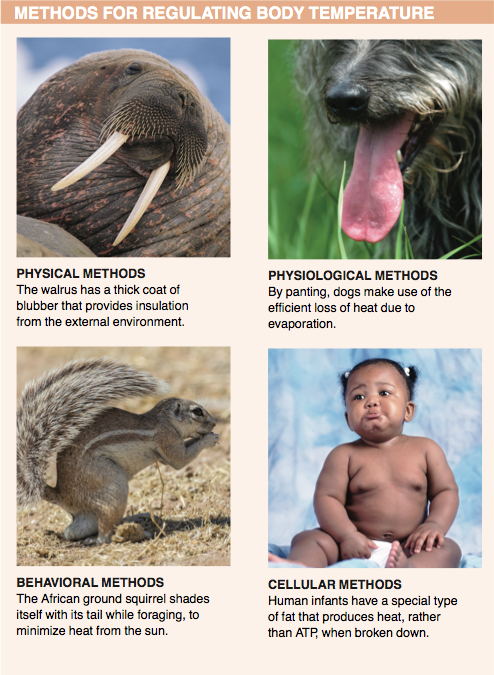
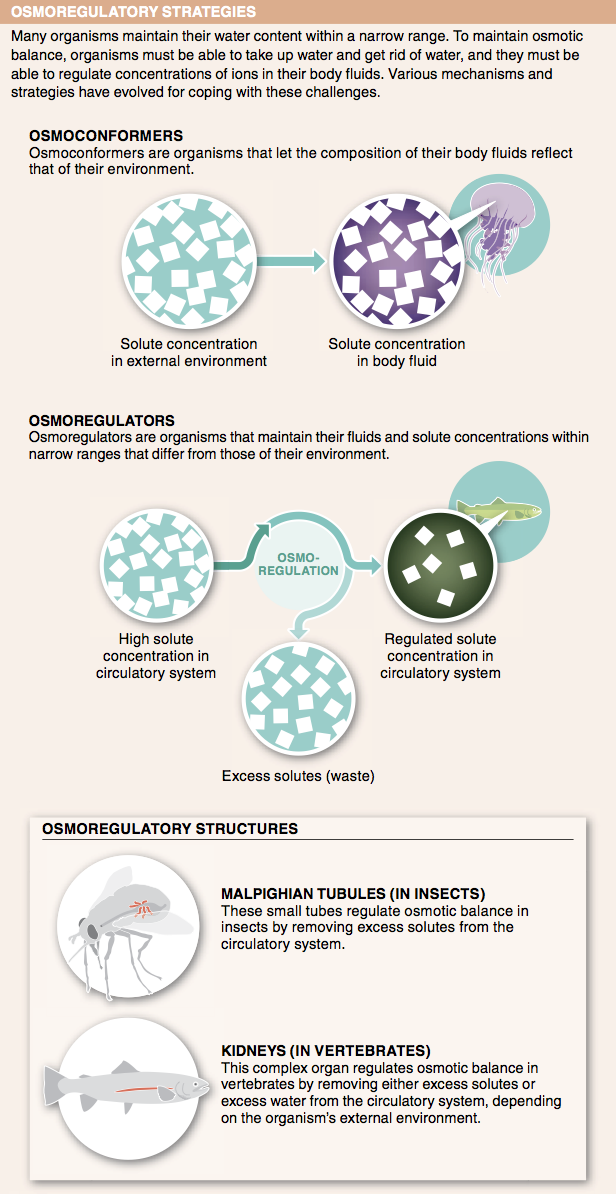
An invertebrate osmoconformer living in salt water does not have a set point for solute concentration in its body fluids. The solute concentrations of its body fluids reflect those of the external environment.
Question 20.12
IihxuLcDzFMAtwRTESYseL2NW+VEZeqqA0jKYQAU+PxTktYIi7nRfpdOTYUNh1xmE4OLGsQHSxCFpzhKvtaSp+Ox8rCK/i5VBe/lGWLY3E1itIOa6ujrzapNg2ciZ2euThe amount of urine excreted each day depends on fluid intake and water loss due to perspiration or exhalation.
Activity results are being submitted...